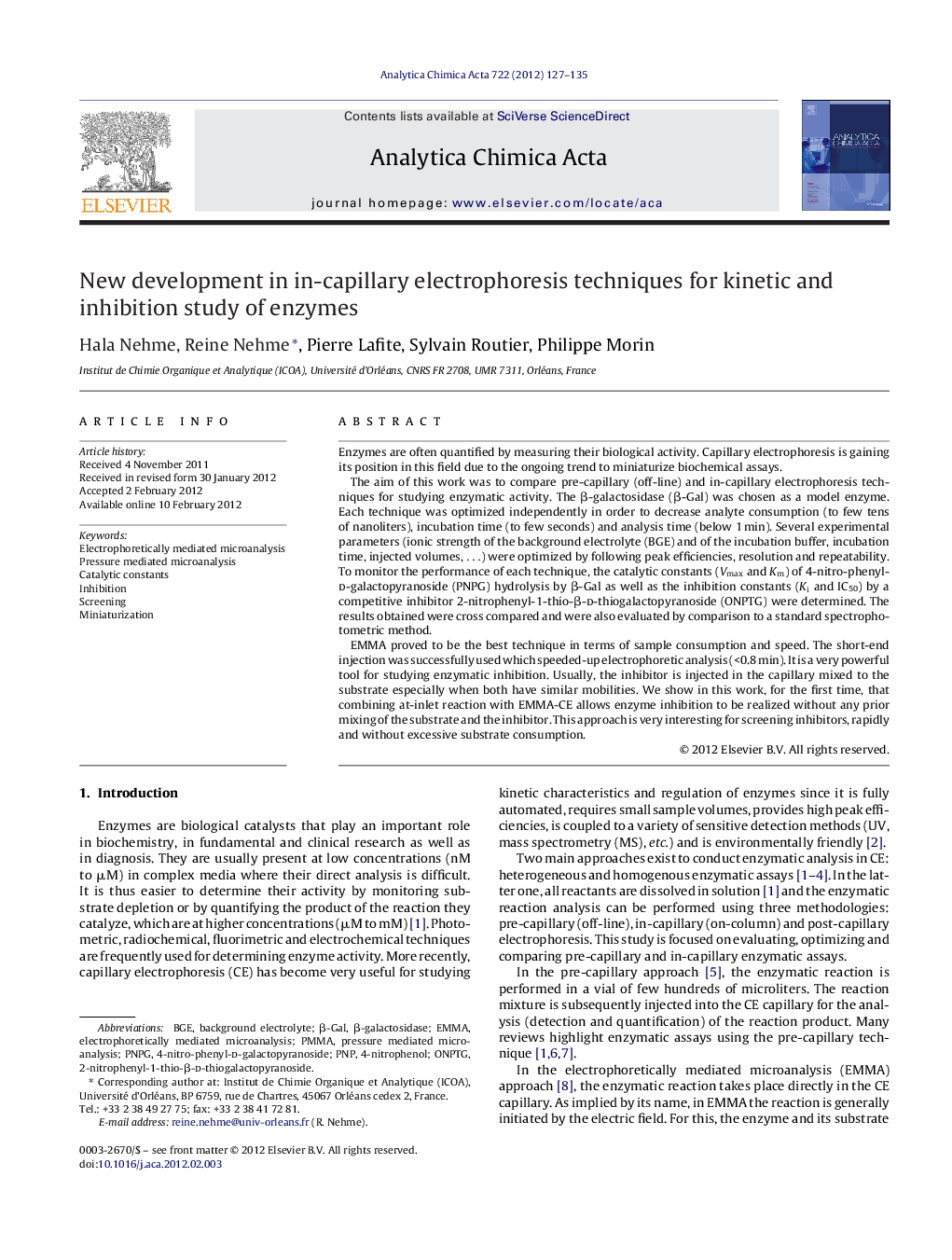| کد مقاله | کد نشریه | سال انتشار | مقاله انگلیسی | نسخه تمام متن |
|---|---|---|---|---|
| 1165668 | 1491110 | 2012 | 9 صفحه PDF | دانلود رایگان |

Enzymes are often quantified by measuring their biological activity. Capillary electrophoresis is gaining its position in this field due to the ongoing trend to miniaturize biochemical assays.The aim of this work was to compare pre-capillary (off-line) and in-capillary electrophoresis techniques for studying enzymatic activity. The β-galactosidase (β-Gal) was chosen as a model enzyme. Each technique was optimized independently in order to decrease analyte consumption (to few tens of nanoliters), incubation time (to few seconds) and analysis time (below 1 min). Several experimental parameters (ionic strength of the background electrolyte (BGE) and of the incubation buffer, incubation time, injected volumes, …) were optimized by following peak efficiencies, resolution and repeatability. To monitor the performance of each technique, the catalytic constants (Vmax and Km) of 4-nitro-phenyl-d-galactopyranoside (PNPG) hydrolysis by β-Gal as well as the inhibition constants (Ki and IC50) by a competitive inhibitor 2-nitrophenyl-1-thio-β-d-thiogalactopyranoside (ONPTG) were determined. The results obtained were cross compared and were also evaluated by comparison to a standard spectrophotometric method.EMMA proved to be the best technique in terms of sample consumption and speed. The short-end injection was successfully used which speeded-up electrophoretic analysis (<0.8 min). It is a very powerful tool for studying enzymatic inhibition. Usually, the inhibitor is injected in the capillary mixed to the substrate especially when both have similar mobilities. We show in this work, for the first time, that combining at-inlet reaction with EMMA-CE allows enzyme inhibition to be realized without any prior mixing of the substrate and the inhibitor. This approach is very interesting for screening inhibitors, rapidly and without excessive substrate consumption.
Figure optionsDownload as PowerPoint slideHighlights
► We optimized and compared three CE techniques for enzymatic assays.
► We used short-end injection to speed-up electrophoretic analysis (<0.8 min).
► We determined kinetic parameters (Vmax, Km) for β-galactosidase/PNPG.
► We determined inhibition parameters of β-Gal without mixing substrate and inhibitor.
► EMMA is the best technique for enzyme analysis by CE as it is time and sample saving.
Journal: Analytica Chimica Acta - Volume 722, 13 April 2012, Pages 127–135